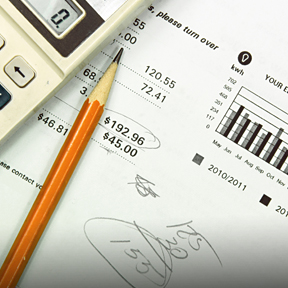Understanding your electricity and gas bills
The Australian Energy Regulator has created a useful guide that will help your business to understand its energy bills. If you’re confused by energy fees and tariffs, visit EnergyMadeEasy.gov.au.
This site is ideal for businesses that do not have a capacity charge on their bill (see ‘Do you pay a peak capacity charge?’ later in this step.)
For information on how to read your electricity and gas bills:
Electricity – EnergyCut.info/how-to-read-bill
Gas – EnergyCut.info/how-to-read-gas-bill
The Australian Energy Regulator also explains energy bills here: EnergyCut.info/aer-energy-
What is a tariff?
A tariff is the price that you pay for your energy. It includes a fixed charge and a variable charge. The Australian Energy Regulator defines these charges as follows:
The fixed charge: also known as the ‘service charge’ or ‘daily supply charge’, is a charge that applies for supplying electricity or gas to your premises for each day of your billing period, regardless of how much electricity you use. It is often displayed as a daily rate on your bill in cents per day.
The variable charge: also known as the ‘usage charge’ or ‘consumption charge’, is listed as cents per kilowatt hour (c/kWh) for electricity and cents per megajoule (c/MJ) for gas.
When comparing offers, you should review both of these charges. The Energy Made Easy website also explains the different tariffs that can be included in the variable charge on your bill: EnergyCut.info/eme-tariffs
“When you get your first energy bill after moving, compare the tariff on it with the last bill from your old premises. If you’re operating in the same area and your operations are much the same, you should be paying the same tariff as before.”


